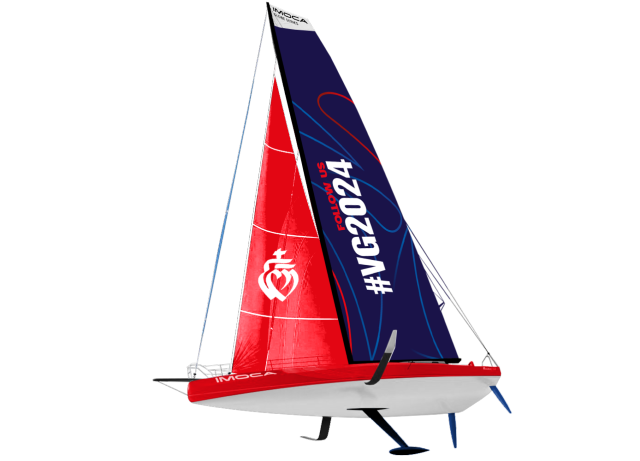The boats of the Vendée Globe all measure 18,28 m long (60 feet) for a 4,50 mdraught. With a large sail area, they are the most powerful monohulls of the planet led by a solo skipper. They can go beyond 30 knots in downwind conditions. The gauge of these race animals is defined by the IMOCA class (International Monohull Open Class Association), founded in 1991 and supported by World Sailing, the International Sailing Federation. The latest updates date from April 2021. The rule requires that the mast, sails, keel jack, but also (and this is a new feature) the boom, the J2 stay and the runners be common to all boats. The rest is up to the architects. Furthermore, the rules indicate the maximum volume of the foils: 8m3. These appendages allow the hull to be « sustained » when sailing downwind. They reduce drag (friction with the water) and improve performance.
What is the Vendée Globe?
Solo, non stop and without assistance
To date, the Vendée Globe is the greatest sailing race round the world, solo, non-stop and without assistance. The event followed in the wake of the Golden Globe which had initiated the first circumnavigation of this type via the three capes (Good Hope, Leeuwin and Horn) in 1968. Only one out of the nine pioneers who had set off in 1968 succeeded in returning to Falmouth, the major port of British Cornwall. On 6th April 1969, after 313 days at sea, British sailor Robin Knox-Johnston finally reached his goal. Twenty years later, after having won the BOC Challenge twice(solo round the world with stopovers), navigator Philippe Jeantot introduced the idea of a new race around the world, but..non-stop! The Vendée Globe race was born. On 26th November 1989, thirteen sailors took the start of the first edition which lasted over three months. Only seven returned to Les Sables d'Olonne.
The ten editions of what the general public now calls the "Everest of the Seas" have seen 240 race starts. Since some skippers have participated multiple times, this represents 130 different sailors. Out of these 240 starts, there have been 146 classified finishes. In total, 100 different skippers have successfully completed at least one edition of the Vendée Globe. This figure alone highlights the extreme difficulty of this global event, where solo sailors face freezing temperatures, towering waves, and the relentless skies of the Southern Ocean. The Vendée Globe is, above all, a journey to the ends of the sea and deep into oneself. It has crowned some of the greatest sailors: Titouan Lamazou in 1990, Alain Gautier in 1993, Christophe Auguin in 1997, Vincent Riou in 2005, François Gabart in 2013, Armel Le Cléac'h in 2017, Yannick Bestaven in 2021, and Charlie Dalin in 2025, who set the new race record at 64 days. Only one sailor has won twice: Michel Desjoyeaux, in 2001 and 2009. The eleventh edition of the Vendée Globe will set sail from Les Sables d'Olonne in 2028.
The course
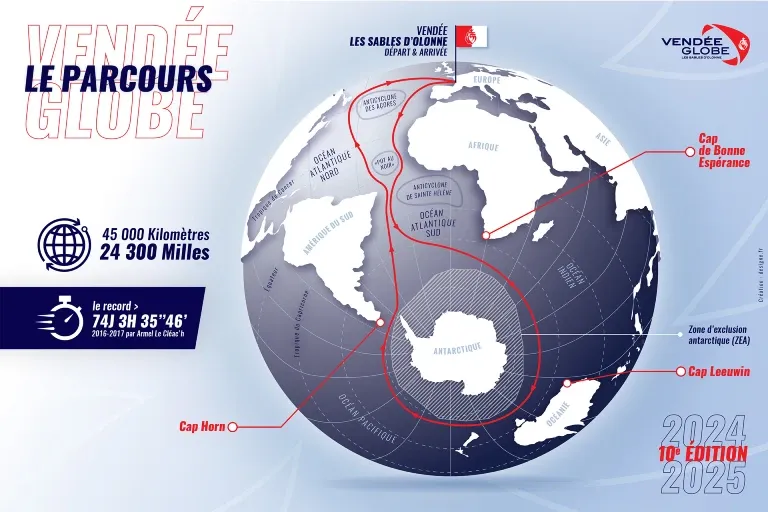
45,000 kilometres or 24,300 miles: that's the theoretical distance a sailor would sail around the world. A revolution accomplished with a record time of 64 days and 19 hours during the last edition of the Vendée Globe, in 2024-2025. This planetary voyage is firstly a climatic journey to sail down the Atlantic, cross the Indian and Pacific oceans, then sail back up the Atlantic... To be expected: a start from les Sables d'Olonne in mid-autumn, a trip in the heart of the Southern seas in full austral summer and a wintery return to Vendée.
In reality, during the previous nine editions of the Vendée Globe, most competitors sometimes sailed over 28 000 miles (about 52 000 kilometers). The solo racers have to deal with the wind, waves, swell and ice. The trajectories of the boats are thus a chain of broken lines, zigzags, detours and changes in courses.
The Vendée Globe solo racers must permanently tamper with the weather systems. These are made of anticyclones - rather stable and moderately windy high pressure zones – and depressions, usually generating strong winds. This confrontation between high and low pressures determines the strategy to adopt in each zone of the course of the Vendée Globe. The North-South trajectory to go down the Atlantic and the South-North way back up are perpendicular to the general movement of perturbations whereas crossing the Indian and Pacific in the Southern seas is done in the same direction as the weather systems.
During the first phase between Les Sables d'Olonne and the cape of Good Hope, at the tip of South Africa, solo racers must sail along the anticyclone of the Açores in the North Atlantic, followed by its equivalent of Saint Helen in the austral part. The game consists in finding the good balance : far enough from low pressure centers to avoid the strongest winds without getting stuck in the high pressures. The second phase consists in taking advantage of the weather phenomena coming from the West so as to be pushed rapidly between Good Hope and the Horn. The third phase looks like the first one with the anticyclones of Saint Helen and of the Açores to be avoided. It's also necessary to manage the passing from one hemisphere to the other : it's the intertropical convergence zone (ITCZ), commonly called the Doldrums. At this place, hot and humid air masses brought by trade winds of the two hemispheres meet and generate unstable air where white calm and stormy squalls alternate without any logic. Vigilance and intuition are indispensable to escape this trap.
On 10th November 2024, starting day, two situations are possible : if the anticyclone of the Açores stretches out to the West of Europe, getting out of the Gulf of Biscay will take place in manageable conditions. On the contrary, Atlantic depressions which rush in between Newfoundland and Spain could generate strong and adverse winds. This beginning of race between LesSables d'Olonne and the tip of Finistère could be achieved very quickly in one short day or prove to be a difficult start... Once past the Portuguese coasts, the fleet will slide toward the Cape Verde : contenders must be careful not to endure perturbations off the islands (Madeira, Canarias, Cape Verde), nor take the risk of being trapped in the calm of the anticyclone of the Açores... This critical moment actually impacts the future point of entry in the Doldrums, generally between the 27° and 30° West parallel. The point of entry also determines the point of exit : North-Easterly winds turn to South-Easterly ones on the other side of the ecuator ! The closer the trajectory to Africa, the shorter the route to go around the anticyclone of Saint Helen...
The high pressures of the South Atlantic are fickle at the end of the austral spring : the goal of the solo racers is thus to sail along the Brazilian coasts as offshore as possible and catch one of the depressions which appear in the bay of Rio and die in the Indian ocean! If the high pressure system breaks up into ephemeral and mobile cells, the fleet ends up scattered in small groups with very different weather conditions : the split is often critical...
In less than a month, the frost of Vendée makes way for equatorial heats, tropical rainshowers and then subantartic polar cold. The Southern seas, which represent almost 3/5th of a round-the-world, offer a chain of depressions originating from Brazil, Madagascar, New Zealand… Solo racers must preserve this train of downwind conditions, sliding from one perturbation to another without being absorbed by anticyclonic tentacles. Powerful North-Westerly winds, fronts with violent Westerly squalls, switchover to South-Westerly freeze, the sequence is very trying for the sailors as well as the machines...
To limit the risk of encounters with icebergs, the Race Direction establishes a zone prohibited to sailing, the Antartic Exclusion Zone (AEZ), which goes around the Antartic between the 45°S on the Crozet Islands side and the 68°S off Cape Horn. Consequently, this demarcation for safety imposes a rather Northerly trajectory which flirts with the anticyclone of the Mascareignes (Indian) and Easter Island (Pacific). Competitors can get caught in high pressure systems while their opponents are surfing on a depression !
If rounding Cape Horn after 50 days at sea reduces drastically the stress of breakage and marks the increase in temperatures, the 7 000 miles left to sail to reach the Sables d'Olonne aren't the simplest ones, especially if other competitors are right behind you! Once you've passed Patagonia, there is still the anticyclone of Saint Helen to avoid while negotiating stormy depressions coming from Brasil. Adverse and irregular breezes, important wind shifts, fronts to cross, far from being an easy ride...
Once the Brazilian coasts are more or less within sight, the Doldrums loom at the horizon before reaching the trade winds of the North hemisphere. Once again, racers must avoid getting trapped in the fearsome calm of the anticyclone of the Açores in order to finally reach the Atlantic depressions which can be more devastating than their austral equivalentsin January... After 70 to 80 days at sea, the winner of the Vendée Globe 2020 will finally be able to see the Nouch buoy which marks the finish line of the Vendée Globe in Les Sables d'Olonne.
The concept
The concept of the Vendée Globe is simple and easy to understand: You have to sail around the world alone without stopping and without assistance. These three parameters make the race what it is by establishing its dna. They are clearly laid out in the race instructions.
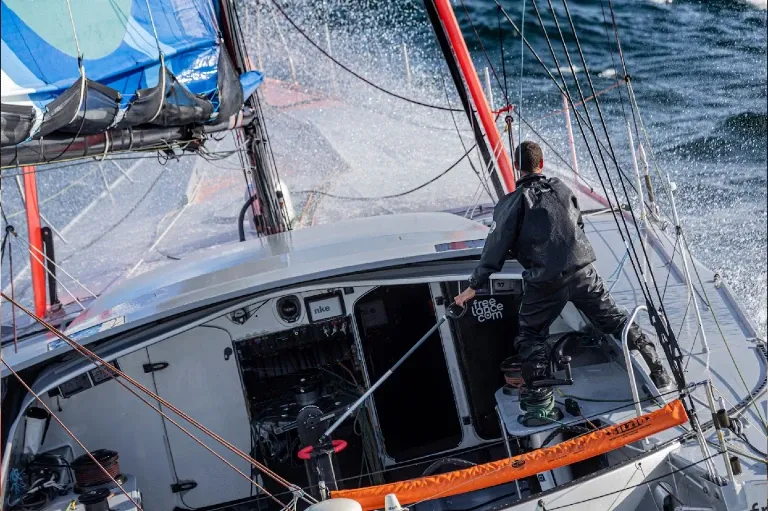
Solo
One woman or one man, the world and a boat. It is very clear. This is a solo race and no one apart from the skipper is allowed aboard the boat during the round the world voyage (unlike in the French film, En Solitaire starring François Cluzet). The notable exception is, of course, when a fellow competitor is rescued and that has happened. We obviously remember the rescue of Kévin Escoffier by Jean Le Cam in the previous edition, but this has happened several times in the history of the Vendée Globe. In the third edition, Pete Goss rescued Raphaël Dinelli in extremis before taking him to New Zealand, but also in 2009, when Jean Le Cam was rescued by Vincent Riou after his boat capsized at Cape Horn.
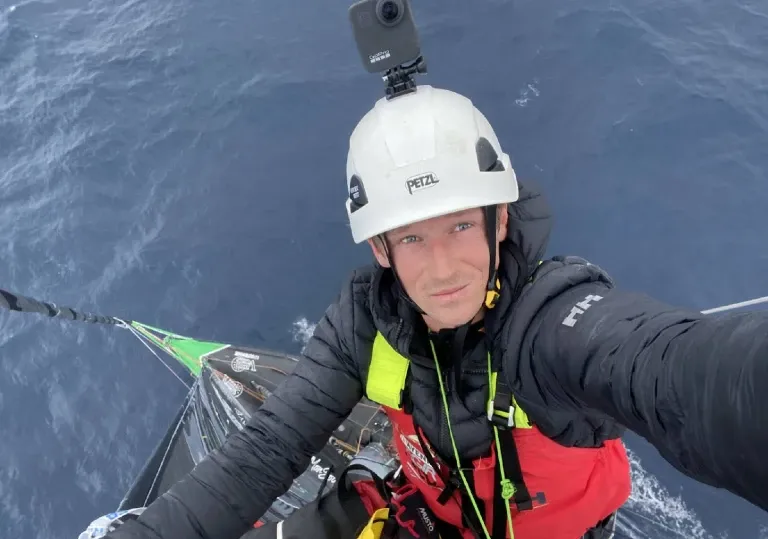
Non-stop
The only pit stop that a competitor in the Vendée Globe is allowed involves returning to Les Sables d’Olonne, within ten days of the start. That is exactly what Michel Desjoyeaux did in 2008: he set off again 40 hours after the start, but went on to win the race in the end. The skippers are allowed to stop – by anchoring in a creek for example, but are not allowed to step ashore beyond the high tide mark. Yves Parlier took advantage of that possibility in a repair that became very famous in the 2000 race. Many others dropped anchor without going ashore, for example to climb the mast, as Marc Guillemot did in 2008/2009.
Without assistance
In the Vendée Globe, the sailor is well and truly alone. Once again, the only assistance allowed is when the sailor returns to Les Sables d’Olonne, just after the start, meaning he would lose a lot of time. Apart from this exception, everyone has to rely on what they can do during the round the world voyage. Routing is strictly prohibited. The sailors have to find their own way around, carry out any repairs following on from damage, which is likely to happen… and they have to take care of themselves when injured or ill. In this particular case, they do have the right to seek advice from the Race Doctor, Jean-Yves Chauve. As for technical assistance, it’s very simple: they are strictly forbidden to go alongside another boat or to allow a third party aboard. The sailors may consult the designers or their technical team to get information about how best to carry out a repair, but it is up to them alone to carry out this work with the means they have on board, while continuing to sail as best they can. Yes, the Vendée Globe is an extreme race.
The Trophy
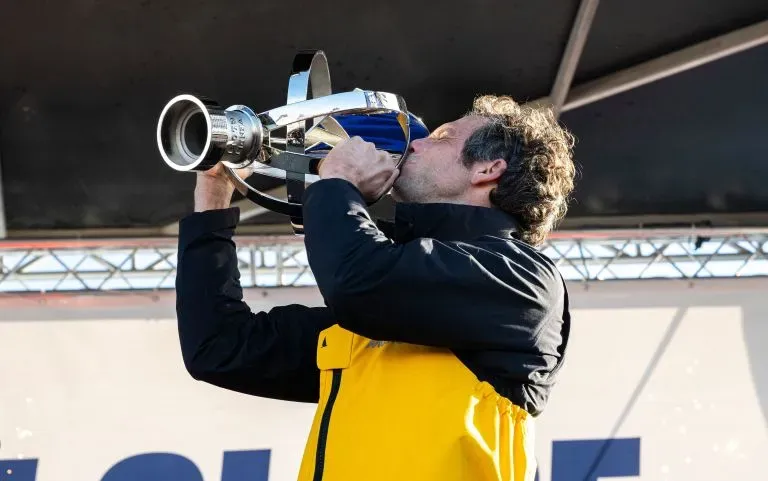
Sixty centimeters high and thirty centimeters of circumference for ten kilos: the imposing Trophy of the Vendée Globe is a piece of artwork in silver-plated bronze designed by Philippe Macheret. Everything in it evokes circumnavigation. It is composed of an elegant rigging surrounded by a terrestrial globe and sits on a pedestal in the shape of a winch. Edited by the Ateliers du Prisme and crafted in the Fonderie d’art Macheret, in Sarthe, it symbolizes the outcome of long months of work. Each winner of the Vendée Globe receives his/her trophy for life.
Who will be the next one to raise it above his/her head ? The answer, in January 2025.
